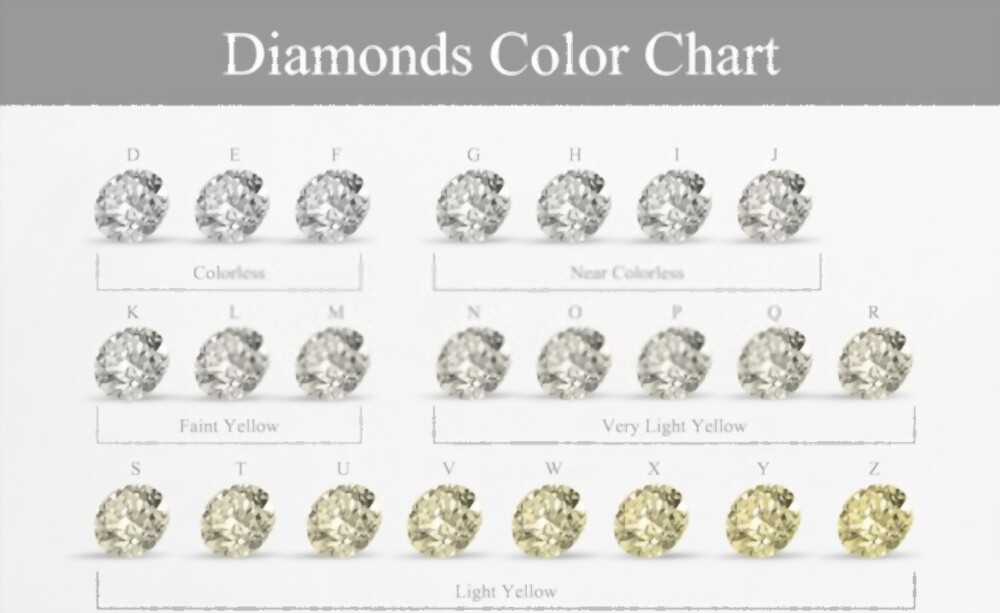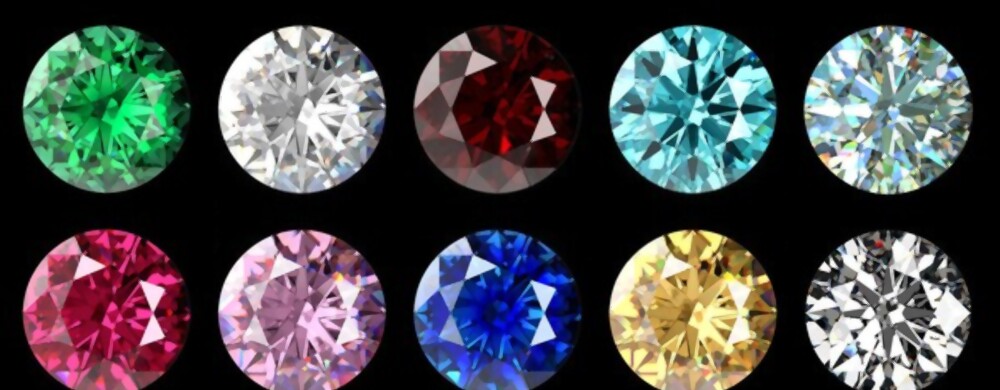The Diamond Rainbow
When you are searching for a diamond, one of the quality you are looking for is the purity of the gem. In the case of the diamond, a stone made of a single element –carbon, you normally seek for the absence of foreign matter. However, you will see that minute traces of other elements in the diamond composition can have incredible results.
The normal range of colors
The most frequent diamonds used in jewellery are colourless or with a slight tint of yellow, brown or gray. You probably already heard of the D-to-Z color grading used by gemological laboratories. D meaning the total absence of color and then, the further you go in the alphabet, the stronger the colour becomes. Within the normal color scale the absence of color is much more valorised. A diamond graded D (colourless) has much higher value than a diamond graded N (very light tint) for example. However, at a certain level of colour saturation, the logic differs.

Fancy colors
Beyond the letter Z for yellow, brown or grey stones, the color is evaluated thanks to another system : the fancy color grades. The saturation, the tone and the hue of color is what distinguishes the stones in this scale. Within the fancy colors you can find rare and exquisite Fancy Pink, Light Orange, Fancy Vivid Blue, Fancy Deep Green, Fancy Intense Purple or even Fancy Black or Fancy White diamonds. These specimens are extremely valuable due to their rarity in the nature – only one in 10’000 diamonds has a fancy color. The most desired are the pinks, blues and greens. In the last few years, these stones have broken records at auction houses :
- The Pink Star, 59.60 carats, Fancy Vivid Pink, $71.2 million in 2017.
- The Oppenheimer Blue, 14.62 carats, Fancy Vivid Blue, $50.6 million in 2016.
- The Pink Legacy, 18.96 carats, Fancy Vivid Pink, $50 million in 2018.

The origin of colors
For each color, there is an event in the diamond formation that affects its composition.
- The presence of yellow or brown in the diamond is caused by nitrogen traces in its structure.
- In the case of blue diamonds, it is due to boron impurities.
- Green stones are the result of an exposure to radiation. The source of radioactivity contact can be natural or the gem can be treated in laboratory.
- Numerous inclusions of dark materials (eg. Graphite) is the reason why diamonds are black.
- Similarly, white or opalescent diamonds are caused by microscopic inclusions.
Fancy diamonds have become very famous thanks to some historical gemstones such as the Hope – a 45.52 carats Fancy Deep greyish blue diamond having belonged to the French royalty and exhibited today at the Smithsonian Museum, undoubtedly the most famous diamonds in the world.
Few decades ago, some mining companies have managed to promote coloured diamonds through a good marketing campaign. The appellation « cognac » and « champagne » diamonds helped to give a more desirable aspect to brown diamonds. Who knows which color will be trendy next year ?
